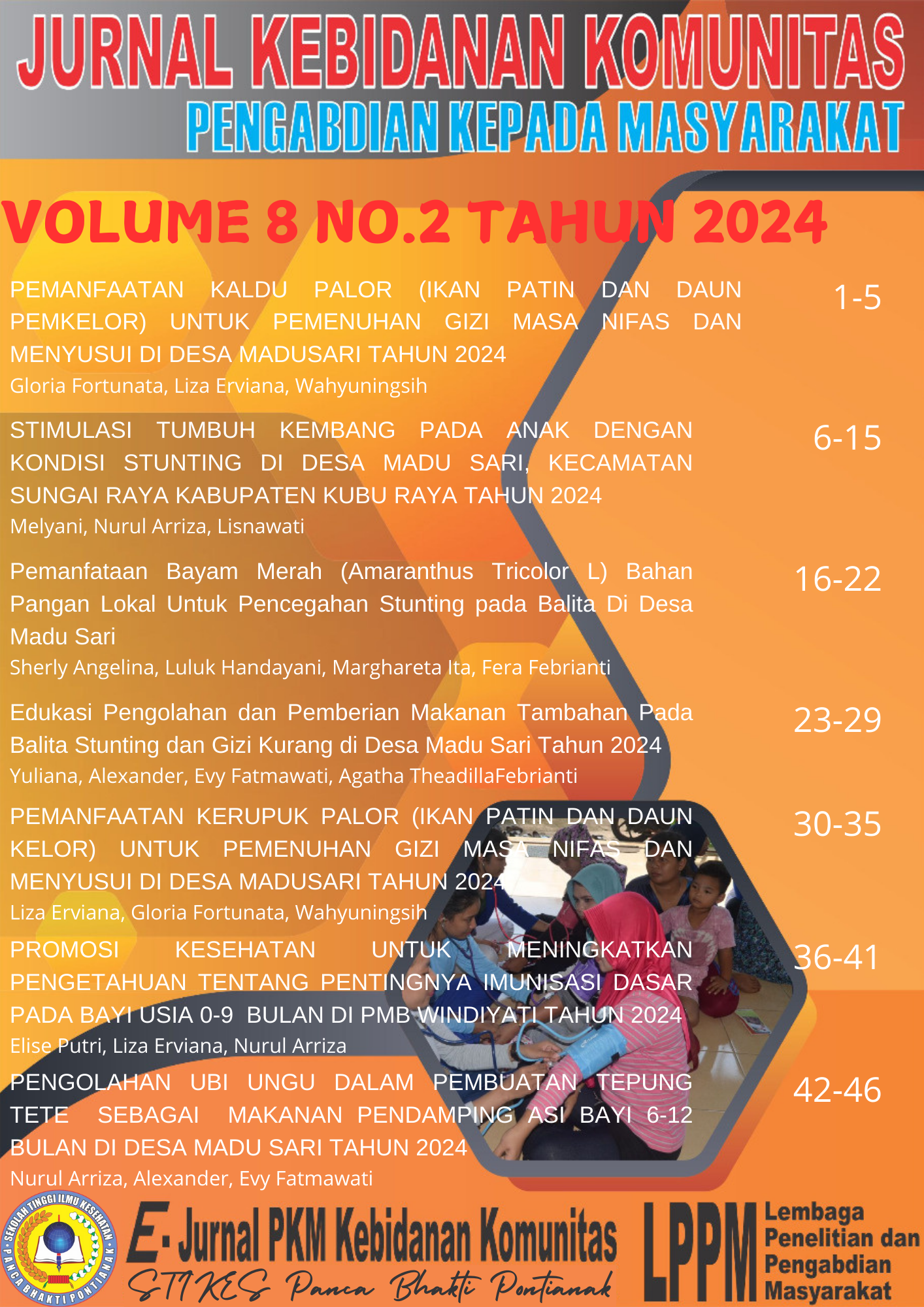PENYULUHAN DAN PEMBERIAN TABLET Fe PADA IBU HAMIL DI DESA SUMURKONDANG KARAWANG, TAHUN 2024
Keywords:
Pregnant, AnemiaAbstract
According to data from Riskesdas in 2018, the prevalence of anemia in pregnant women in Indonesia was 48.9%, consisting of pregnant women aged 15-24 at 84.6%, pregnant women aged 23-34 at 33.7%, mothers pregnant aged 35-44 was 33.6% and finally at 45-54 was 24%. If we look at the existing data, we can see an increase of 37.1% in pregnant women with anemia since 2013 (Ministry of Health of the Republic of Indonesia, 2018). According to the West Java Provincial Health Office (2012), the incidence of anemia in pregnant women in West Java is 51.7%. The incidence of anemia in pregnant women in Karawang district is 38% (Karawang District Health Office, 2019). The high prevalence of anemia has negative consequences such as disruption and obstacles to the growth of both body cells and brain cells. Reduced hemoglobin concentration during pregnancy results in reduced oxygen supply to all body tissues, causing signs and symptoms of anemia such as weakness, drowsiness, dizziness, fatigue, headaches, decreased appetite, nausea and vomiting, loss of concentration and shortness of breath (in severe anemia). (Caroline, 2021). This community service aims to increase pregnant women's knowledge about anemia and provide Fe tablets as an effort to treat anemia. The activities carried out included counseling about anemia and giving Fe tablets. Based on activities, there were 93.2% of people affected by anemia, the anemia management program was 95%, the majority of education was at junior high school level at 40.9%, there was an increase in pregnant women's knowledge about anemia by 23.4. With increased knowledge, it is hoped that there will be changes in health behavior, especially regarding the consumption of Fe tablets and good eating patterns.


